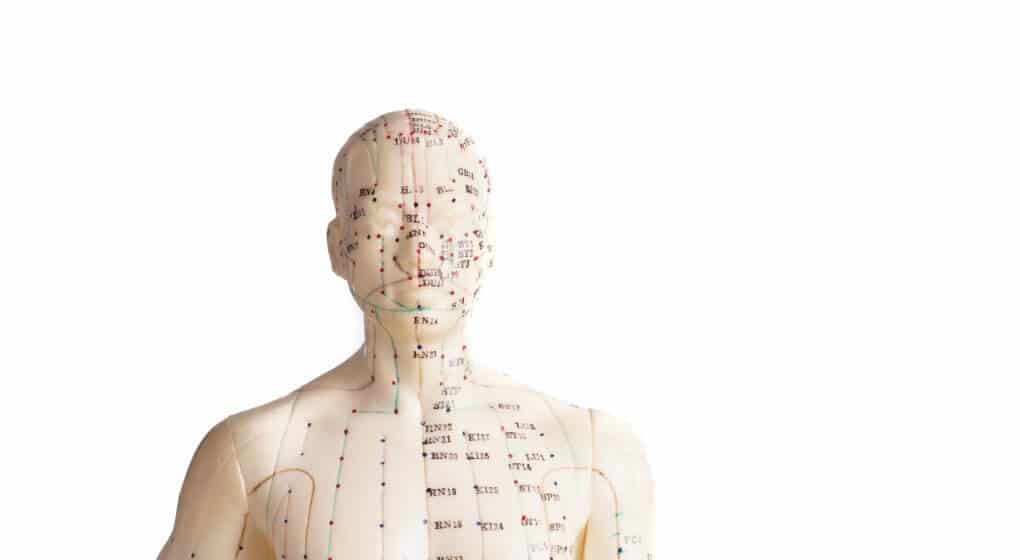
Considering the benefits of both meditation and acupressure, many companies now offer acupressure mats that impact pressure points while you meditate. Glean the benefits of acupuncture in the comfort of your home. Read on for more about acupressure and meditation and the best acupressure mat for your meditation needs.
Product | Best for | Rating |
|---|---|---|
Low cost | ||
Durability | ||
Casual use | ||
Hard surfaces | ||
Regular use |
What is An Acupressure Meditation Mat?
An acupressure meditation mat is a portable acupressure solution that lets you access pain relief anywhere. Acupressure can also relax you, and using an acupressure mat while you meditate can enhance the experience.
Acupressure originates in Asian medicine, and it involves putting pressure on targeted points of the body. The method uses the same channels as acupuncture without puncturing the skin.
Today’s acupressure mats distribute pressure across multiple points of your body while allowing you to pick the spot that’s most comfortable for you. These mats are washable and portable, and many come with carrying cases or neck pillows.
You can lie on the floor on an acupressure mat or step on it barefoot, and if your mat doesn’t come with a neck pillow, you can roll a towel underneath it for proper positioning.
What Are the Advantages of Acupressure?
Acupressure mat benefits range from temporary pain relief to long-term escape from prolonged conditions. A review of fifteen studies concluded that acupressure is effective for relieving a variety of pains. People with labor pain, low back pain, chronic headaches, and other ailments all benefited from undergoing acupressure treatment.
If you experience pain or muscle fatigue from daily living, health conditions, or strenuous exercise, regularly using an acupressure mat may help you recuperate. News outlets have even reported on increased blood circulation and lowered hear rates achieved with trial use of acupressure mats.
What Are the Advantages of Meditation?
Combining your meditation practice with the mat method of acupressure covers two holistic health treatments in one sitting. Meditation achieves a range of neurological benefits, as Forbes recently reported.
Notable on the list of benefits are the preservation of aging brains, increased focus, antidepressant effects, improved memory, and reduced anxiety. If meditation helps kids in school to focus, it’s easy to imagine what positive outcomes meditation has on the mature brain.
How to Choose the Best Acupressure Mat
Not all acupressure mats are equal, especially concerning functionality, comfort, portability, and price. Here’s what to consider when shopping for acupressure mats.
“Nail” Count
Thousands of plastic points make up the bed of each acupressure mat, but the total number of “nails” varies based on the manufacturer and the size of the mat. Today’s acupressure mats use circular plastic discs with multiple points across their surface.
The total number of points usually falls between five and eight thousand. The more points, the better, so that your weight can evenly distribute across the surface of the mat.
Materials
Typical features of acupressure mats are washable fabric, an inner foam layer, and plastic pressure points. If you have allergies, look for a 100 percent cotton cover and hypoallergenic foam core.
Regardless of the material, washing your mat regularly will also help prevent allergy responses to build up of dust and other allergens.
Portability
If you plan to take your mat on the go, or store it when not in use, look for a mat that includes a carrying case or bag. Some mats come in “travel size” measurements, too, so that is another option that increases your mat’s portability.
Price
A small acupressure mat for feet only is the least expensive option, starting well under 20 dollars. For a full-back mat, you can expect to pay anywhere from 20 to 60 dollars. Prices also vary depending on whether a pillow or other extras come with it.
Do Acupressure Mats Really Work?
If their popularity isn’t telling enough, most acupressure mats earn exceptional reviews from people who suffer from back pain and conditions like fibromyalgia and muscle spasms.
Because so many of us sit at desks or in vehicle seats for much of the day, taking time to stretch out and support blood circulation is a crucial part of daily living.
However, the science on acupressure mats is somewhat limited, likely because they have only recently become popular in the realm of holistic health. At the same time, much of the research that relates to acupressure in general also translates to use of acupressure mats.
Acupressure Mat Studies
One study tracked 32 participants who used acupressure mats while listening to music. All the participants reported increased relaxation on independent surveys. Acupressure mat use also led to higher systolic and diastolic blood pressures, slower heart rates, and increased circulation.
Other bodies of research suggest that using acupressure mats spikes the body’s natural release of endorphins. Regardless of the science behind them, users often report feeling relaxed and drowsy following short acupressure mat sessions. Incorporating this daily ritual into your life doesn’t seem to have any drawbacks if you’re reasonably healthy.
Acupressure Mat Concerns
Still, manufacturers recommend that people avoid using the mats if they have preexisting conditions like heart disease, blood pressure conditions, diabetes, or other medical concerns. For example, people who have neuropathy should not use these mats, nor should people who are pregnant.
Those with epilepsy or anyone who is undergoing treatment with anticoagulants should avoid acupressure. Also, you should not use an acupressure mat if you have any open wounds. If you have any serious health concerns, it’s best to consult your physician before using an acupressure mat.
Product | Best for | Rating |
|---|---|---|
Low cost | ||
Durability | ||
Casual use | ||
Hard surfaces | ||
Regular use |
Acupressure Mat Review
These top five acupressure mats are my picks for comfort, quality, and portability.
Nayoya’s mat contains 6,210 pressure points, and the accompanying neck roll pillow has 1,782. A vinyl carry bag lets you take the set with you. The mat’s cover is cotton, and the inner foam padding is removable to make washing easier.
The large size of the body mat accommodates your upper and lower back areas, and the thickness of the pad means you can use it on both hard and soft surfaces.
Pros:
Cons:
Another mat and pillow duo, ProSource’s acupressure mat comes in a range of colors so you can choose what’s most appealing to your senses. The large mat has 6,210 acupressure points, and the neck pillow has 1,782.
The cover is 100 percent cotton, and the inner foam is a plant-based eco-foam. The manufacturer’s instructions include recommendations on how to use the neck pillow for both your face and your feet.
Pros:
Cons:
This mat-only offering from Spoonk comes with a five-year warranty, and the product has graced the Dr. Oz show and earned notoriety from there. 6,200 stimulation points are non-toxic ABS plastic, and the interior foam is an eco-foam made in the USA.
A 100 percent cotton cover encases the foam and comes off for easy hand washing, and the accompanying bag lets you take the mat wherever you go.
Pros:
Cons:
Kenko offers no pressure point count for their acupressure mat, but the set does include a full mat and neck pillow. The cushioned mat comes in multiple color options with the same features.
The manufacturer suggests using the mat to ease sciatica pain, improve circulation, and relieve fibromyalgia. A carrying case fits both pieces, so it travels easily, and the cover comes off for washing.
Pros:
Cons:
Bed of Nails’ mat includes a total of 8,820 nails across the surface. This achieves better weight distribution, so users experience less initial pain as they adjust to the pressure point sensation. Non-toxic rounded spikes are recycled ABS plastic while the foam is polyurethane.
The cover is 100 percent cotton, comes in three color choices, and removes easily for washing. Use it on hard surfaces for more impact and softer surfaces for less impact.
Pros:
Cons:
Conclusion
For optimal comfort and weight distribution, the Bed of Nails Acupressure Mat’s nail count is the most impressive. Better weight distribution means a more comfortable acupressure session, and recycled non-toxic plastic nails plus a 100 percent cotton cover keep things clean and hypoallergenic. Nayoya’s Acupressure Mat is a strong contender that’s best for comfort, with its thick foam and a competitive nail count.
A low-cost option that appeals to those just getting their feet wet with acupressure, ProSource’s mat and neck pillow are a good value for the price. Spoonk’s Acupressure Mat has a durable cover that feels thick, although its pressure point count can’t compete with other models. Ultimately, Kenko’s mat isn’t my favorite due to the manufacturer’s limited release of information, such as the nail count in the set.





